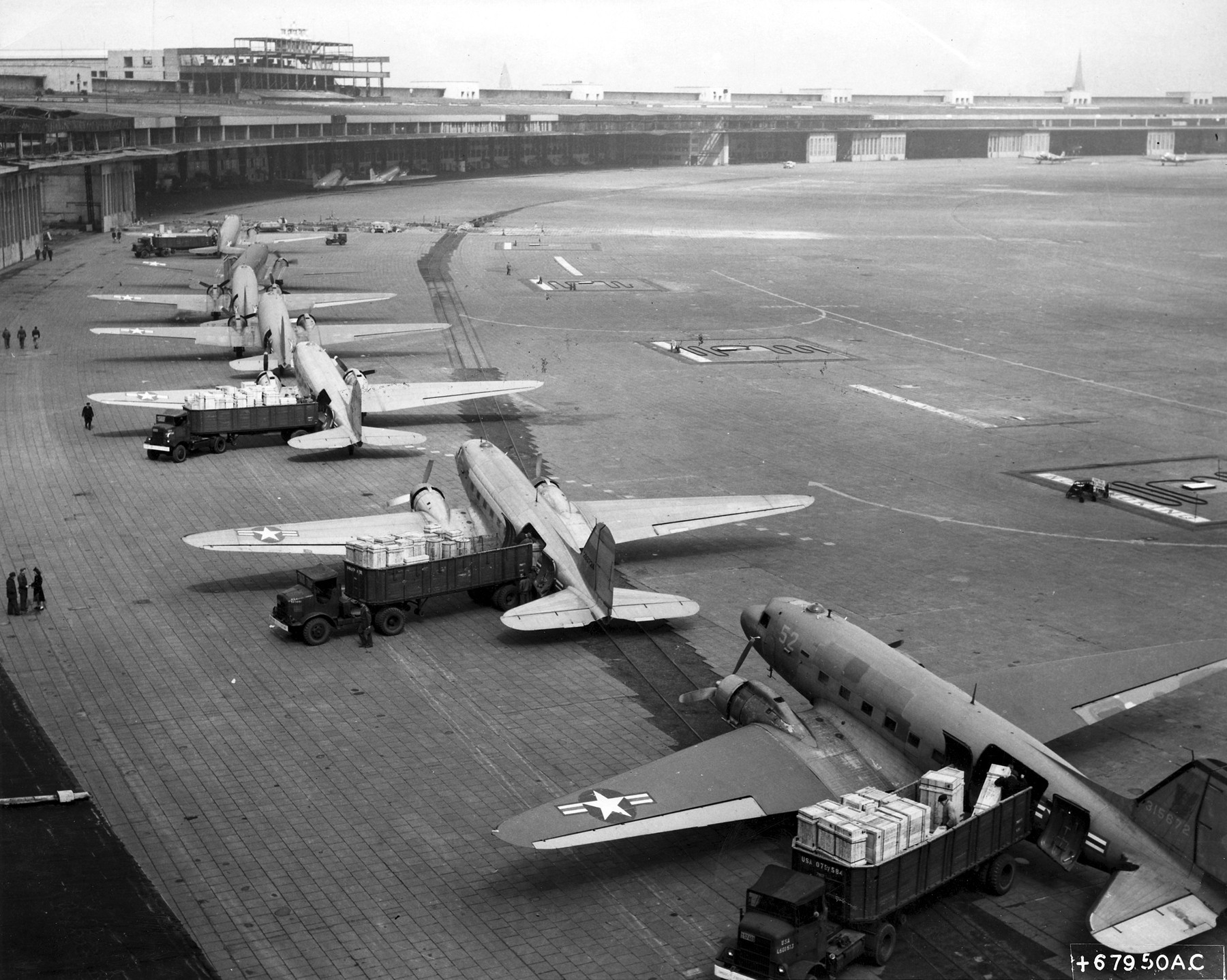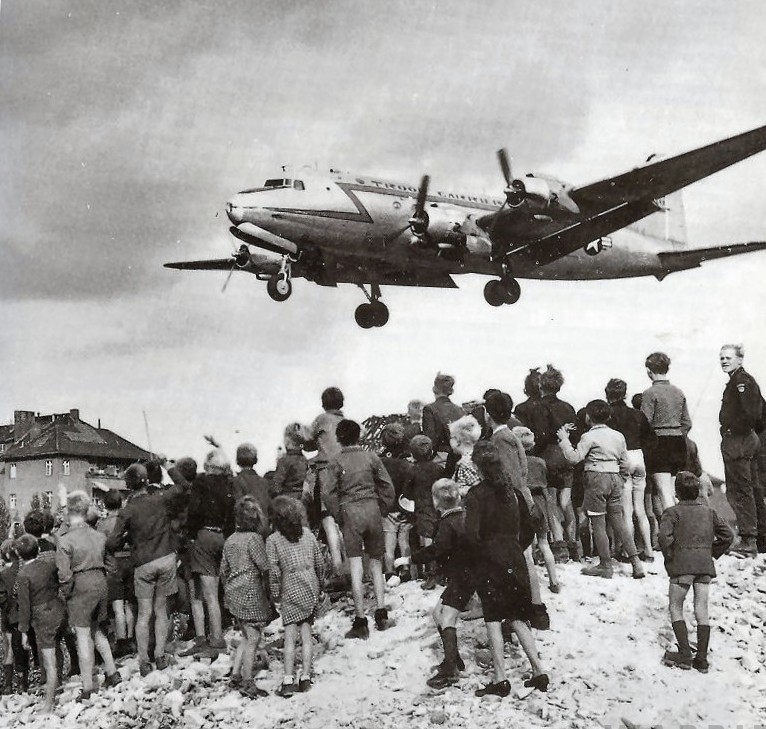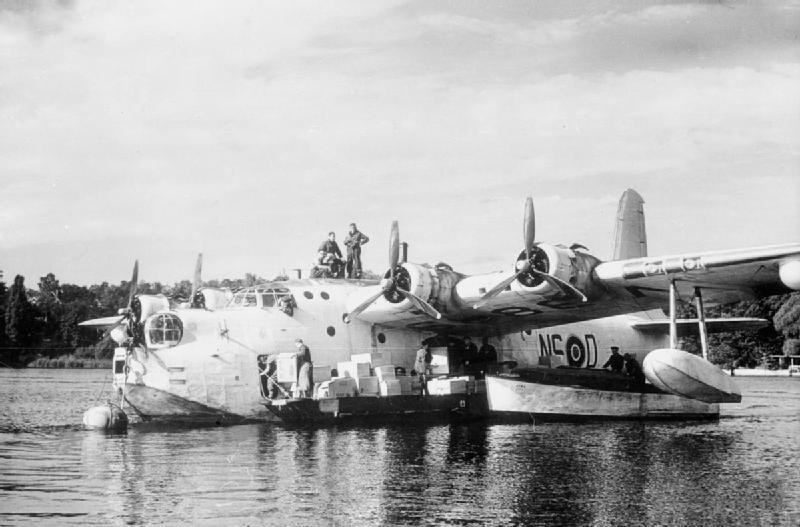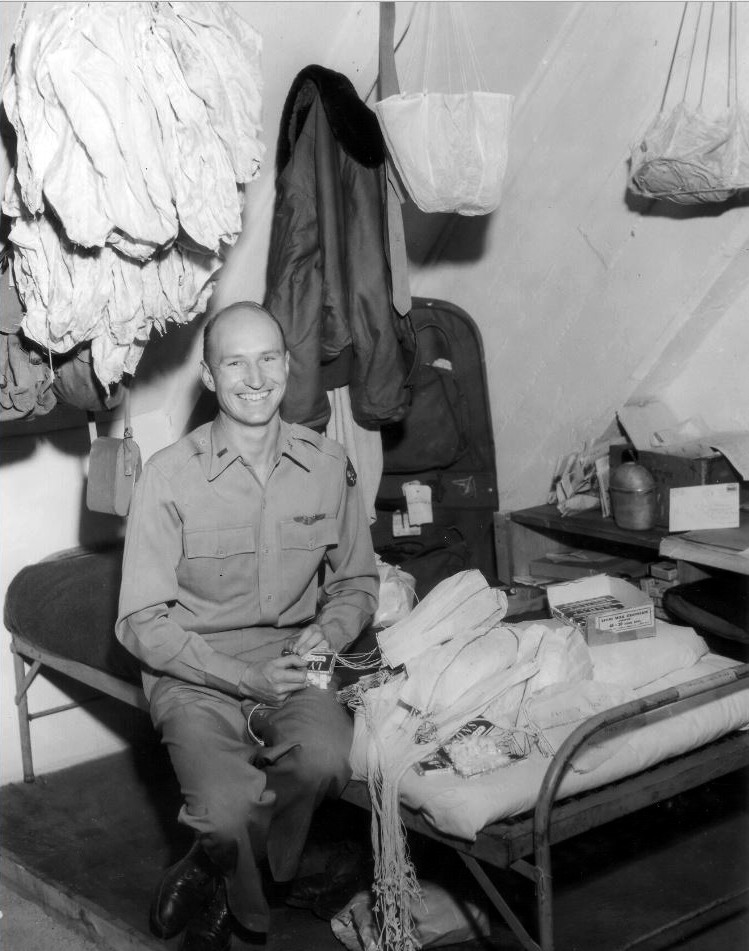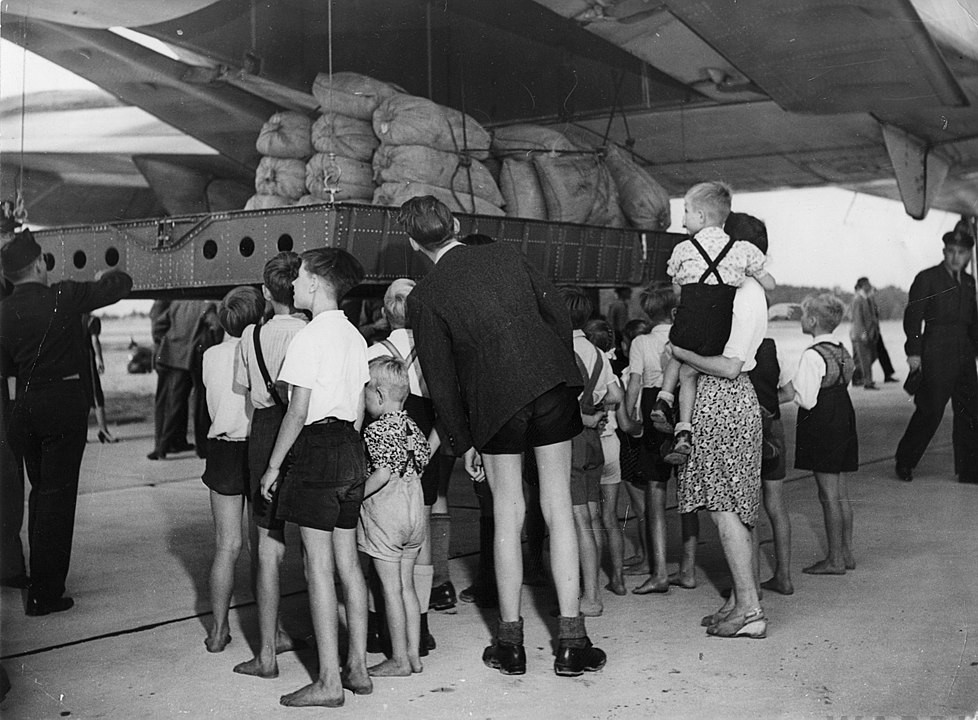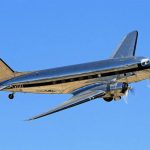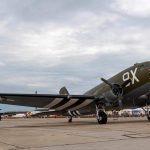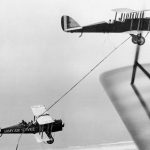At the end of the Second World War, U.S., British, and Soviet military forces divided and occupied Germany. Also divided into occupation zones, Berlin was located far inside Soviet-controlled eastern Germany. The United States, United Kingdom, and France controlled western portions of the city, while Soviet troops controlled the eastern sector. As the wartime alliance between the Western Allies and the Soviet Union ended and friendly relations turned hostile, the question of whether the western occupation zones in Berlin would remain under Western Allied control or whether the city would be absorbed into Soviet-controlled eastern Germany led to the first Berlin crisis of the Cold War. The crisis started on June 24, 1948, when Soviet forces blockaded rail, road, and water access to Allied-controlled areas of Berlin. The United States and United Kingdom responded by airlifting food and fuel to Berlin from Allied airbases in western Germany. The crisis ended on May 12, 1949, when Soviet forces lifted the blockade on land access to western Berlin.
The Western Allies organised the Berlin Airlift (also known as Berliner Luftbrücke, literally “Berlin Air Bridge” in German) from 26 June 1948 to 30 September 1949 to carry supplies to the people of West Berlin, a difficult feat given the size of the city’s population.
The crisis was a result of competing occupation policies and rising tensions between Western powers and the Soviet Union. After the end of the Second World War, the future of postwar Germany was plagued by the divisions within and between Allied powers. The only decision of significance that emerged from wartime planning was the agreement of zones of occupation. Even after the end of hostilities, the problem of what to do about Germany was not successfully addressed at the July 1945 Potsdam Conference. Not only was there a lack of consistency in the political leadership and policymaking among the British and the Americans, occupation policy on the ground also confronted unforeseen challenges. Two and a half million Berliners, spread between four zones of occupation, faced profound privations: Allied bombing had reduced the city to rubble, shelter and warmth were scarce, the black market dominated the city’s economic life, and starvation loomed. While mired in such conditions, Berlin emerged as a forward salient in the Western struggle against the Soviet Union.
The year 1947 saw major shifts in occupation policy in Germany. On January 1, the United States and United Kingdom unified their respective zones and formed Bizonia, which caused tensions between East and West to escalate. In March, the breakdown of the Moscow Conference of Foreign Ministers and the enunciation of the Truman Doctrine served to harden the lines of an increasingly bipolar international order. In June, Secretary of State George Marshall announced the European Recovery Program. The purpose of the Marshall Plan—as the program came to be called—was not only to support economic recovery in Western Europe, but also to create a bulwark against Communism by drawing participating states into the United States’ economic orbit.
In early 1948, the United States, United Kingdom, and France secretly began to plan the creation of a new German state made up of the Western Allies’ occupation zones. In March, when the Soviets discovered these designs, they withdrew from the Allied Control Council, which had met regularly since the end of the war in order to coordinate occupation policy between zones. In June, without informing the Soviets, U.S. and British policymakers introduced the new Deutschmark to Bizonia and West Berlin. The purpose of the currency reform was to wrest economic control of the city from the Soviets, enable the introduction of Marshall Plan aid, and curb the city’s black market. Soviet authorities responded with similar moves in their zone. Besides issuing their own currency, the Ostmark, the Soviets blocked all major road, rail, and canal links to West Berlin, thus starving it of electricity, as well as a steady supply of essential food and coal.
The United States and United Kingdom had few immediate options if hostilities broke out. Because of the draw down in U.S. and British combat forces since the end of the Second World War, the Red Army stationed in and around Berlin dwarfed the Western Allied military presence. On June 13, 1948, the administrator of U.S.-occupied Germany General Lucius Clay reported to Washington that “There is no practicability in maintaining our position in Berlin and it must not be evaluated on that basis…. We are convinced that our remaining in Berlin is essential to our prestige in Germany and in Europe. Whether for good or bad, it has become a symbol of the American intent.” The Truman administration agreed. Based upon written agreements with the Soviet Union in 1945, the only connections to Berlin left to the Western Allies were air corridors from West Germany used to supply Berlin by air. The administration calculated that if the Soviets opposed the airlift with force, it would be an act of aggression against an unarmed humanitarian mission and the violation of an explicit agreement. Thus, the onus of igniting a conflict between the former allies would be on the aggressor.
The United States launched “Operation Vittles” on June 26, with the United Kingdom following suit two days later with “Operation Plainfare.” Despite the desire for a peaceful resolution to the standoff, the United States also sent to the United Kingdom B-29 bombers, which were capable of carrying nuclear weapons. The beginning of the airlift proved difficult and Western diplomats asked the Soviets to seek a diplomatic solution to the impasse. The Soviets offered to drop the blockade if the Western Allies withdrew the Deutschmark from West Berlin.
Even though the Allies rebuffed the Soviet offer, West Berlin’s position remained precarious, and the standoff had political consequences on the ground. In September 1948, the Socialist Unity Party of Germany (SED), the German Communist Party of the Soviet zone of occupation, marched on the Berlin City Council and forced it to adjourn. Fearing that the Western Allies might halt the airlift and cede West Berlin to the Soviets, 300,000 West Berliners gathered at the Reichstag to show their opposition to Soviet domination. The turnout convinced the West to keep the airlift and the Deutschmark.
In time, the airlift became ever more efficient and the number of aircraft increased. At the height of the campaign, one plane landed every 45 seconds at Tempelhof Airport. By spring 1949, the Berlin Airlift proved successful. The Western Allies showed that they could sustain the operation indefinitely. At the same time, the Allied counter-blockade on eastern Germany was causing severe shortages, which, Moscow feared, might lead to political upheaval.
On May 11, 1949, Moscow lifted the blockade of West Berlin. The Berlin Crisis of 1948–1949 solidified the division of Europe. Shortly before the end of the blockade, the Western Allies created the North Atlantic Treaty Organization (NATO). Two weeks after the end of the blockade, the state of West Germany was established, soon followed by the creation of East Germany. The incident solidified the demarcation between East and West in Europe; it was one of the few places on earth that U.S. and Soviet armed forces stood face-to-face. It also transformed Berlin, once equated with Prussian militarism and Nazism, into a symbol of democracy and freedom in the fight against Communism.
Source The Historian of the U.S. Department of State.







